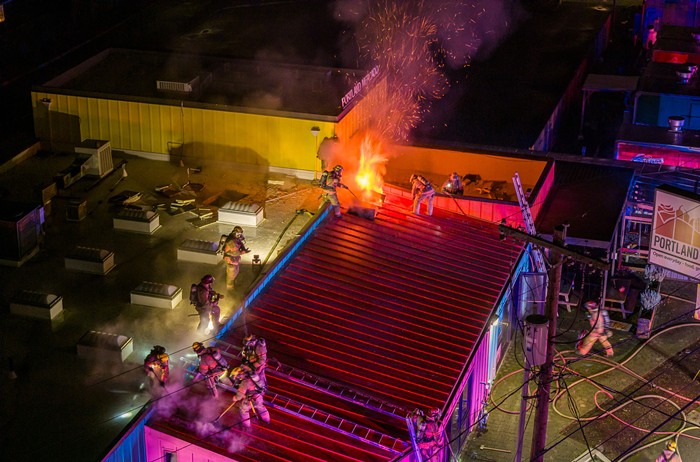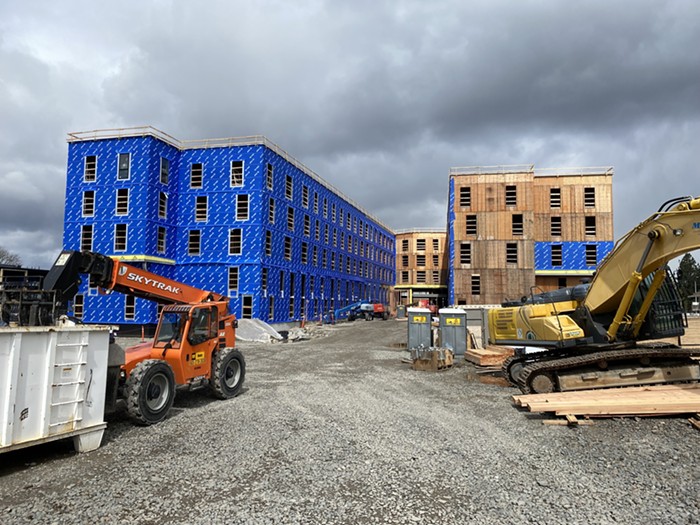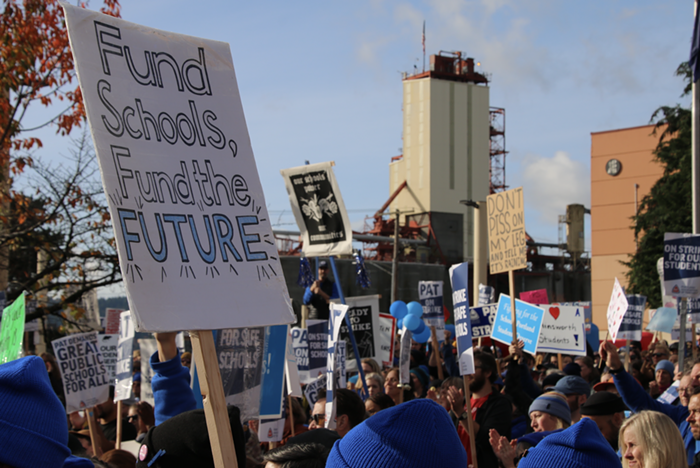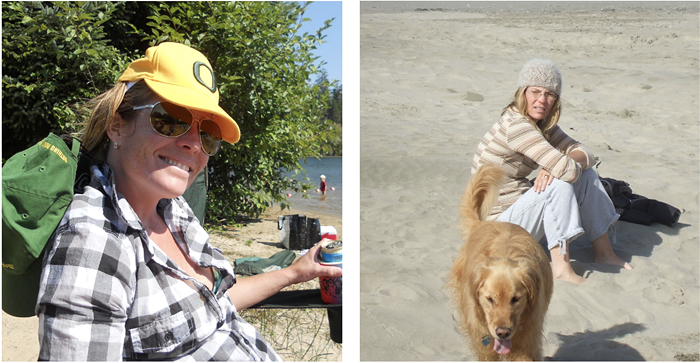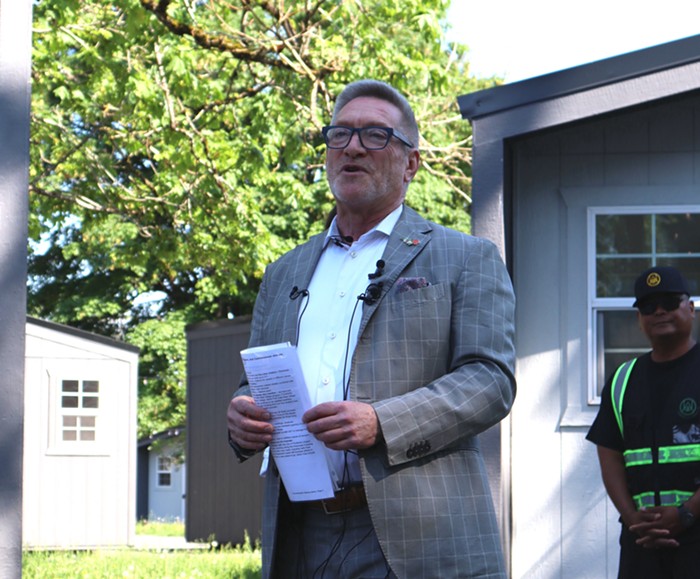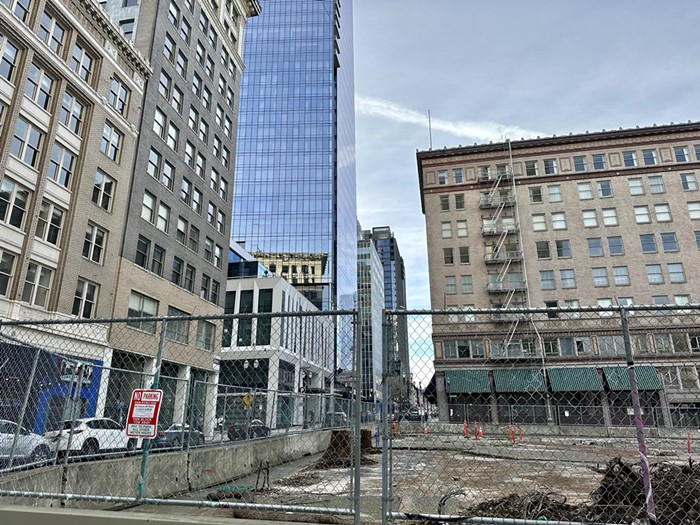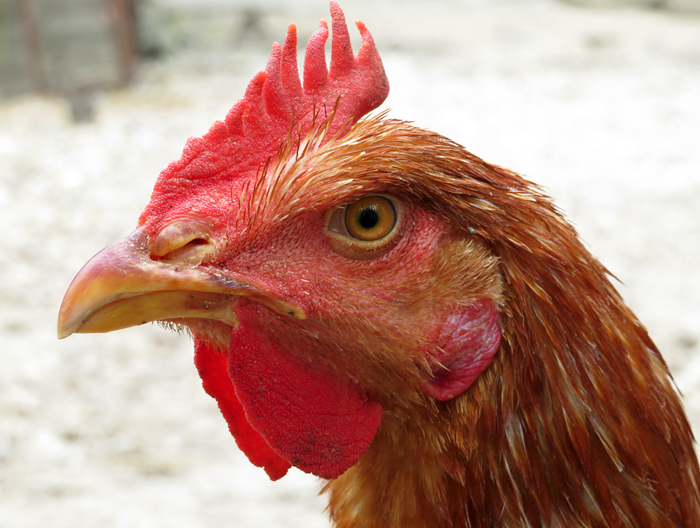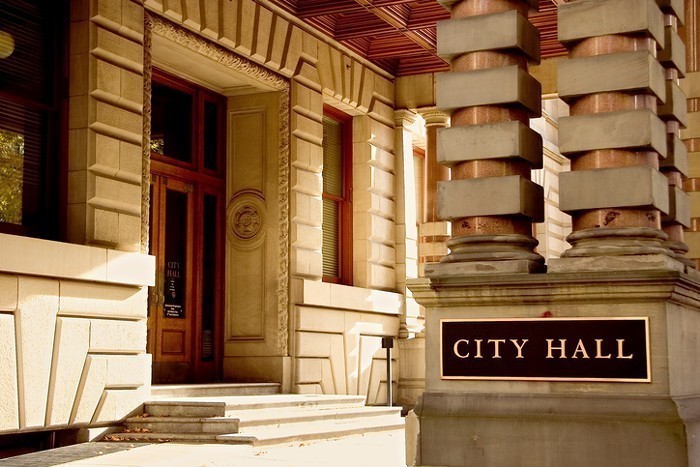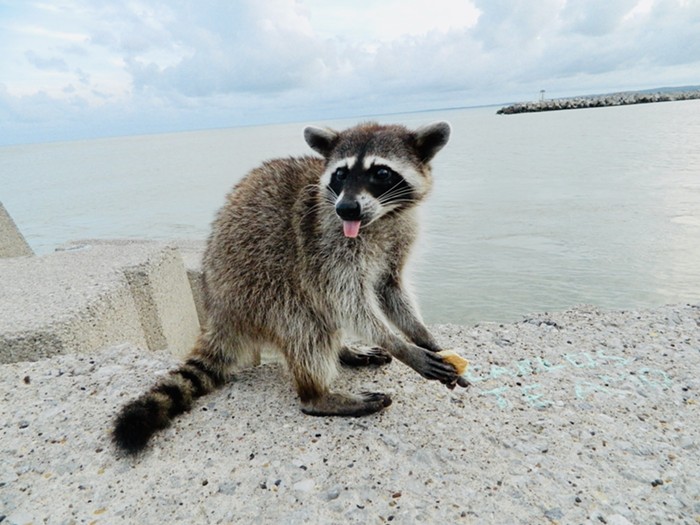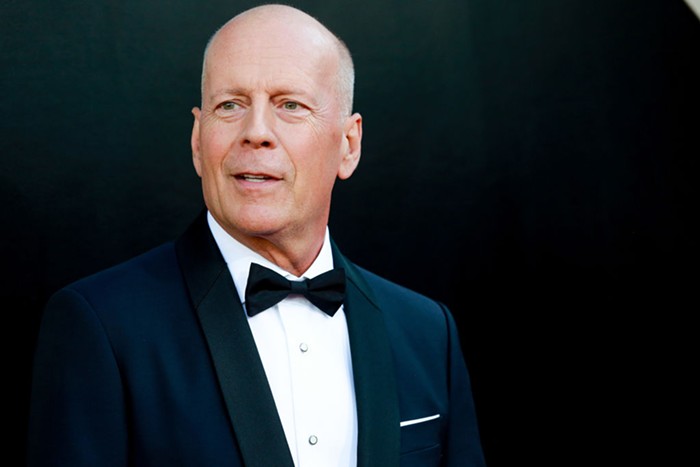
Oregon entered 2021 with scenes emblematic of the previous year: Tense protests attended by political groups, attracting a forceful, militaristic response by police and condemnation by elected officials.
But despite their familiar features, the intensity of two recent rallies signals a possible paradigm shift in the nature of local and national protests and politics in 2021. Here's a look at how these recent demonstrations seemed to flip the script on their movement's tactics:
December 31, 2020: Portland
On New Year's Eve, a gathering of over 200 Portlanders protesting police violence ended with activists breaking windows and looting downtown businesses.
The protesters claimed solidarity with Black Lives Matter, a movement that transformed 2020 with worldwide demonstrations against racial injustice and police brutality, in response to the May killing of George Floyd by a Minneapolis police officer.
Floyd’s death sparked months of nearly nightly demonstrations in Portland, where crowds of thousands, spanning race, age, and progressive ideologies, regularly marched to the Multnomah County Justice Center to demand change. Local and federal law enforcement officers responded to the vastly peaceful protests with startling violence in the form of tear gas, batons, rubber bullets, and other so-called “less-lethal” munitions. Many activists saw their participation as a way to illustrate how disproportionately police were responding to small acts of opposition—like a thrown water bottle, heckling, or the simple nonviolent refusal to leave a public park.
But the movement’s focus has metamorphosed since its May 29 initiation, with some protests relying on property damage, looting, and aggressive confrontations with police to get a message across.
While weekly demonstrations in Portland have continued since Floyd’s death, crowd sizes now rarely top 100. Over the months, the largely autonomous, loosely-organized activist networks have broadened their focus to demonstrate against other progressive issues, like the treatment of US Immigration and Customs Enforcement (ICE) detainees and local housing inequities. But while activists have consistently called for city government to defund the Portland Police Bureau (PPB)—a call answered with a 3 percent reduction in the PPB’s previous year’s budget by the Portland City Council—at times their other demands feel as formless and hard to recognize as the movement's remaining participants. The election of President-elect Joe Biden in November seemed to be a clear turning point for the movement. Paired with the protest’s growing focus on property destruction, the win effectively stripped the demonstrations of their more moderate supporters who were, in part, motivated by the possibility of a second term under Donald Trump.
On New Year’s Eve, the current iteration of the 7-month-old movement was on full display in downtown Portland.

The protest began around 10 pm by the Justice Center, with activist Dustin Brandon reminding the crowd that they were there because the police, not the protesters, were escalating violent confrontations. Yet shortly after Brandon’s address—and long before any police appeared to challenge the group—attendees dressed in all-black, identity-obscuring clothing (commonly referred to as "black bloc") shattered the windows of a nearby Starbucks. It was the first of what would be several windows smashed that night. This inspired several other attendees to set fire to nearby traffic signals, while others shot fireworks into the portico of the Mark O. Hatfield US Federal Courthouse and tipped over a temporary fence surrounding the federal building. Another team of protesters set a large plastic dumpster ablaze, which melted as it burned.
These actions, carried out by around 50 of the night’s attendees, appeared all geared toward the same goal: To draw out police for some type of confrontation. It worked.
PPB responded to the property destruction shortly before 10:45 pm, making their presence known with a blaring announcement from a loudspeaker truck, declaring the gathering an “unlawful assembly.” By 11 pm, PPB announced that the gathering was now characterized as a riot, a label that permits officers to use force against a large group of people.
While PPB made the announcement, it was officers with the Federal Protective Service (FPS)—assigned to guard the federal courthouse—who appeared on the ground in hopes of dispersing the demonstration. Around 15 federal officers exited the courthouse carrying riot shields, and proceeded to run at protesters, shooting the crowd with mace, pepper balls, and large plastic bullets. Activists responded with a barrage of water bottles, glass, and paintballs, effectively pushing the small pack of federal officers back towards their building.
After reinforcements arrived from Multnomah County Sheriff's Office (MCSO) and PPB, the night took on the classic ebb and flow of protests past—officers marched protesters down streets, protesters pushed back, officers retreated, and then reappeared with force. This continued until midnight, at which point police left the scene entirely.

Realizing the officers had disappeared, some protesters called for attendees to smash the windows of a Starbucks store in Pioneer Courthouse Square, a few blocks west of the demonstration. En route, protesters broke the windows of Ben Bridge Jewelers, Chase Bank, the Portland Wine Bar, and many other businesses. Some stole merchandise from vandalized stores, something rarely witnessed during the past months of Portland protests.
Questioned about the looting, a protester—who asked the Mercury to remain anonymous, fearing retribution—said, "I have mixed feelings about it.”
“It's incredibly frustrating to have [local officials] just constantly ignore protester demands and hope it's just going to go away,” they continued. “It makes sense that some people are getting increasingly destructive, in response to the lack of change."
In a press conference held January 1, Portland Mayor Ted Wheeler condemned the damage to the city and its businesses.
"My good-faith efforts at deescalation have been met with scorn by antifa and anarchists bent on destruction," he said. Wheeler called on federal, state, and local law enforcement to work with him to develop a plan to respond to further demonstrations and asked state legislators to increase penalties for demonstrators repeatedly involved in property destruction.
At the same press conference, PPB Chief Chuck Lovell said that no officers were seriously injured due to the protests and looting. As of Tuesday, PPB has arrested three people for crimes connected to the protest.
Despite Wheeler’s threats of heightened penalties, it appears demonstrators have no plans to stop protesting police. Left-wing activists in Portland are planning another Black Lives Matter movement protest this week, but the time and location details have not yet been revealed.
January 1, 2021: Salem
The new year began with another protest, this time led by right-wing activists protesting the state’s COVID-19 restrictions on the Oregon Capitol grounds. Like Portland’s rally the night before, the January 1 event culminated in an open—and unusual—confrontation between right-wing demonstrators and local and state law enforcement dressed in riot gear, slinging impact munitions and smoke bombs.
Right-wing activists in attendance—like members of the Proud Boys, a national far-right organization with white nationalist ties, and Patriot Prayer, a similarly-minded group based in Vancouver, WA—have a history of expressing support for police and collaborating with local police forces at their rallies. That's led law enforcement to appear to treat these activists differently than left-wing groups.
In Salem, recent left-wing rallies often attract a response from police wearing full riot gear while right-wing rallies, like the November “Stop the Steal” protests regarding the 2020 election results, were monitored by bike police in standard uniforms.
Portland has seen a similar pattern. In August, PPB stood by as right-wing demonstrators brawled in the street with left-wing antifascists, with one Proud Boy leader pointing a revolver into the crowd. PPB only declared the event an unlawful assembly after the right-wing demonstrators had left downtown Portland, leaving law enforcement's response to only impact left-leaning activists.
But on January 1, conservative protesters in Salem had their own antagonistic interactions with law enforcement.
The rally began on a more traditional note: As the right-wing demonstrators prepared to march that afternoon, they cheered at passing police squad cars in support. Many assembled carried “Thin Blue Line” flags, a signal of law enforcement support, or wore the emblem on their clothing.

Speakers at the rally, which attracted nearly 300 attendees, included Patriot Prayer leader Joey Gibson, who expressed his support for Oregon mayors defying COVID-19 restrictions, and incoming Clackamas County Chair Tootie Smith, who accused Governor Kate Brown of giving the US Occupational Safety and Health Administration (OSHA) "gestapo-like authority” over businesses that violated COVID-19 restrictions.
Many attendees referenced a December 21 rally at the State Capitol, where right-wing activists were ejected by police for attempting to disrupt the third special legislative session of 2020. The confrontation—which gained national attention for demonstrators breaking doors and assaulting journalists—was the first sign of a shift within Oregon's right-wing demonstrators.
After listening to speakers, protesters began a two-mile march from the Capitol to Mahonia Hall, the Governor’s residence. As they marched, a hail downpour sent many running back to their cars. By the time the group reached Mahonia Hall, which was blocked by a line of Oregon State Police (OSP), their numbers were halved.
After a few brief speeches, and some scattered death threats against Brown from the crowd, the group left, but not before stopping to berate nearby OSP officers.
“Thanks for protecting that piece of shit!” one yelled, referring to Brown.
The lingering group of 50 far-right activists marched through Salem's downtown, where they encountered several people in black clothes who said they were guarding a local business from the protesters. When the two groups began to argue, law enforcement pulled up in armored SWAT vehicles and positioned themselves between the two arguing factions.
Right-wing marchers shouted at the riot police standing between them.
"Let us take care of them for you!" one yelled, referring to the small group of seemingly left-wing individuals. "We've been nice to you before, and you do not do your fucking job!"

As the black-clad people departed without police intervention, an officer with the Salem Police Department (SPD) addressed the right-wing cadre.
"Let this business and these people be,” the officer said. “We're not gonna allow this."
The right-wing protesters refused to leave, and alternated between shouts of "We the people!" and group chants of "fuck antifa!" Some squared off with specific officers and tried to stare them down. Eventually riot police pushed into the crowd with batons between their hands. Police also shot pepper balls at the protesters’ legs, which caused some to jump back in apparent surprise, shouting, "Are you serious? You're gonna shoot me?"
Police arrested a man in the crowd. In response, a protester shouted, "You want everyone against you guys—you want antifa, you want the Proud Boys."
"The war's here!” another yelled. “Choose a side!"
The line of police marched the protesters back to the Capitol. Conflicts along the way, between protesters and police, led to two more arrests.
The right-wing marchers appeared crestfallen as they retreated. Before leaving the Capitol, one carried a Thin Blue Line flag to the police line—and threw it in the mud at officers’ feet, allowing multiple people to walk on it. "Blue lives no longer matter," the demonstrator declared.
Right-wing groups are expected to return to the State Capitol Wednesday for another anti-government rally, dubbed "Operation Occupy the Capitol.”

